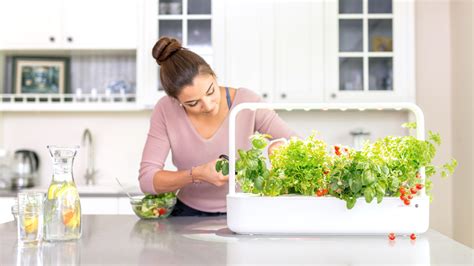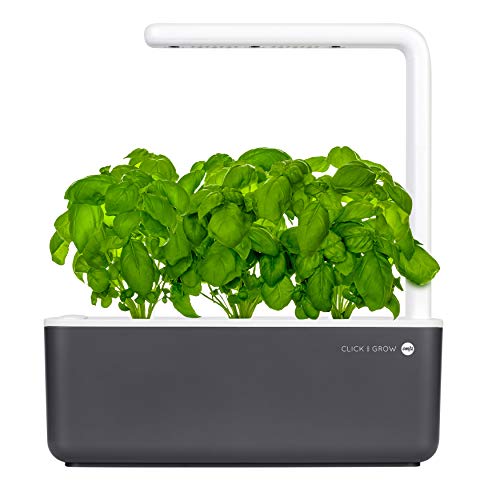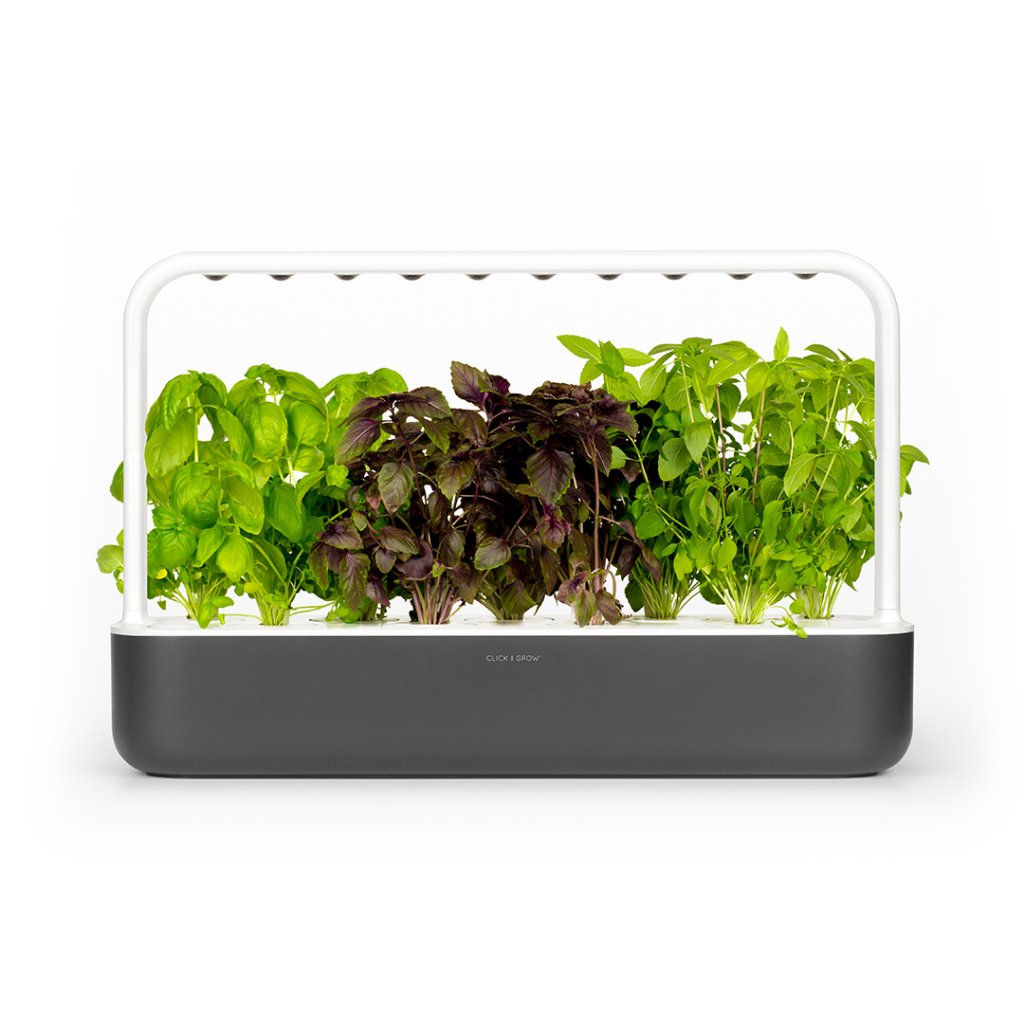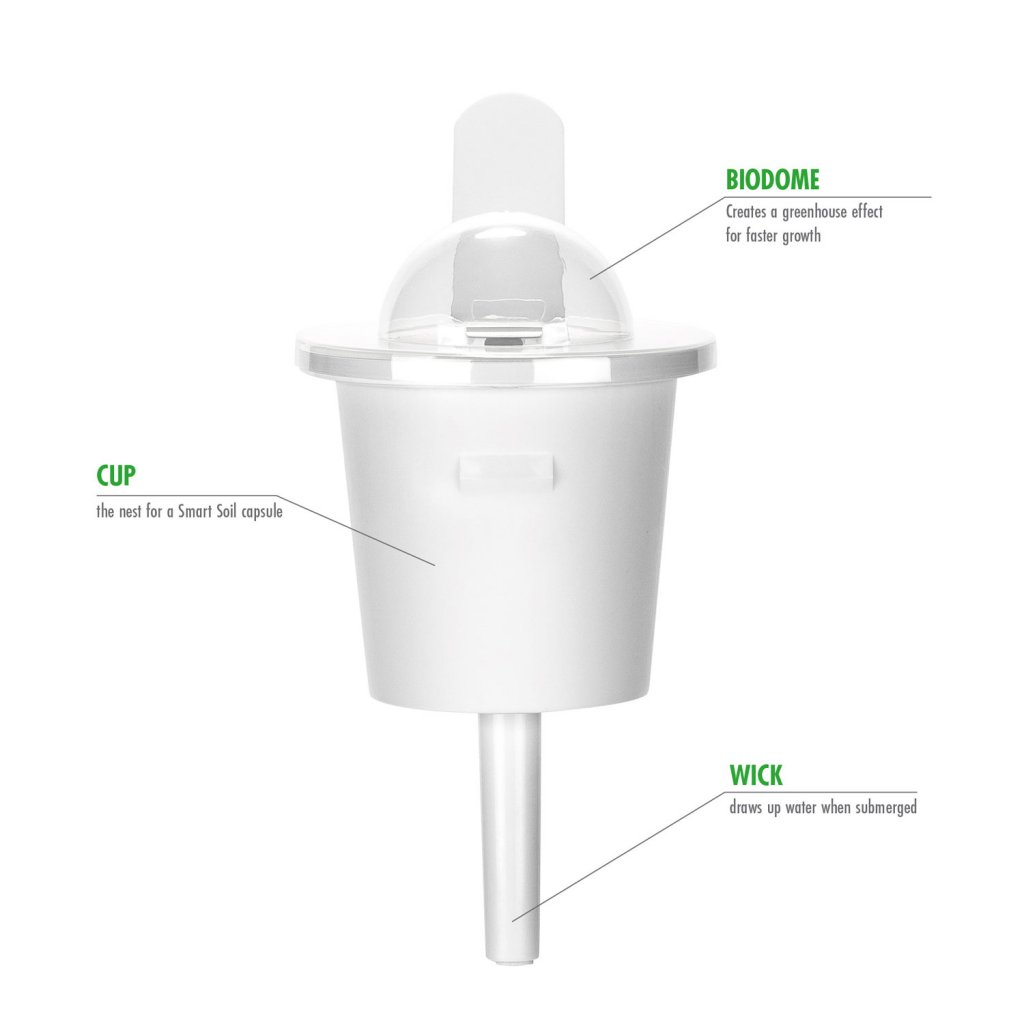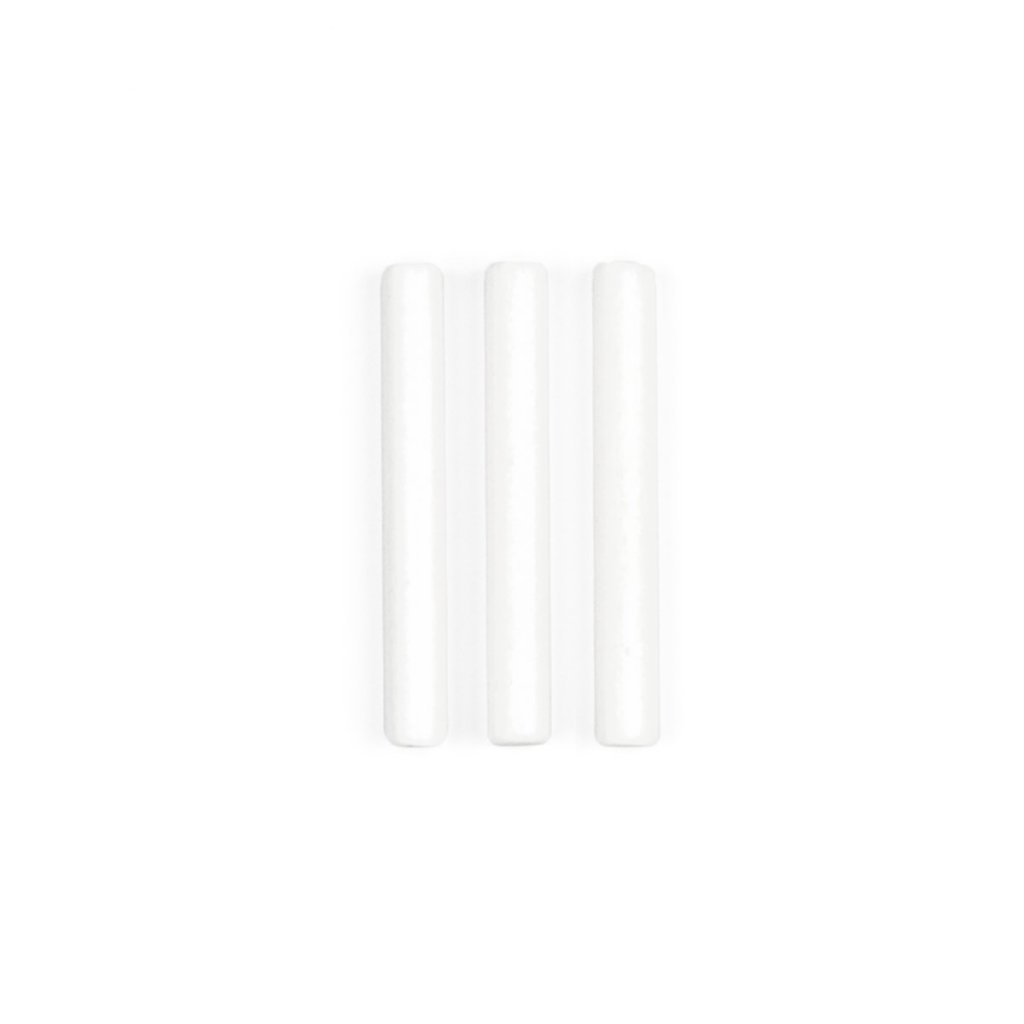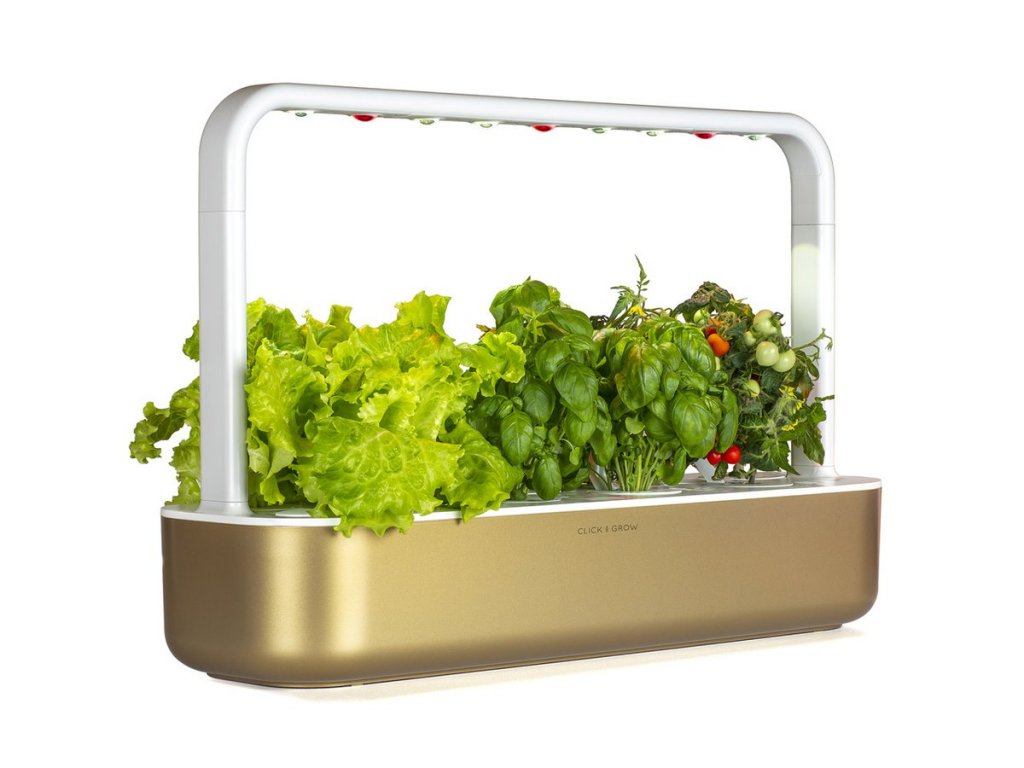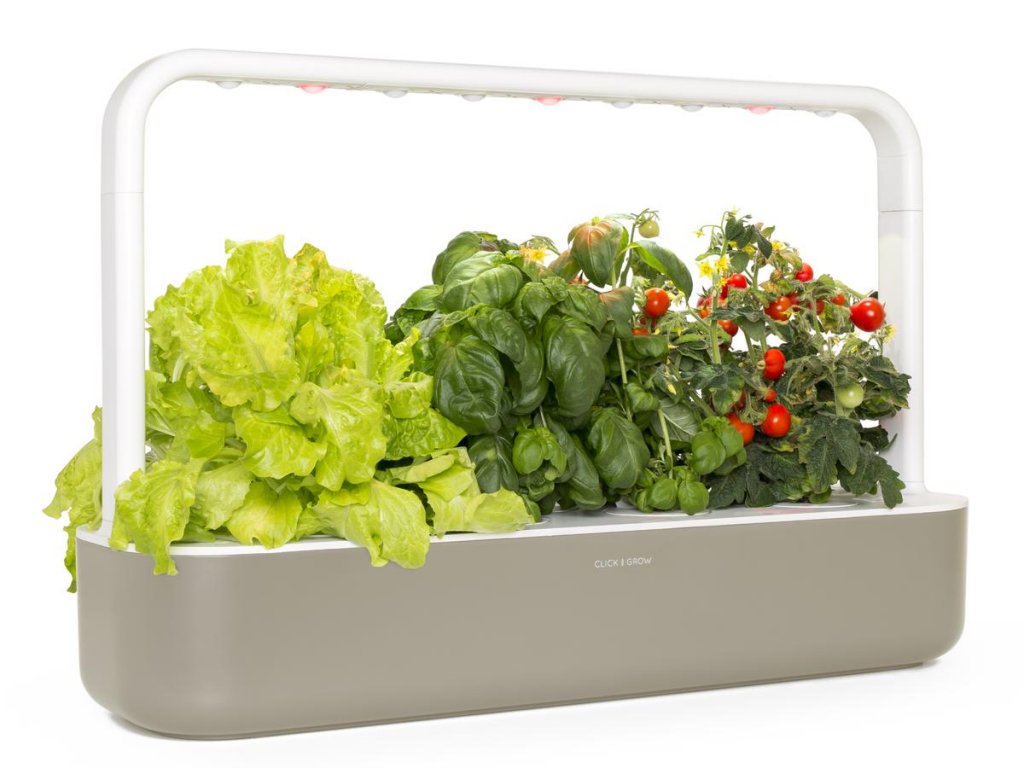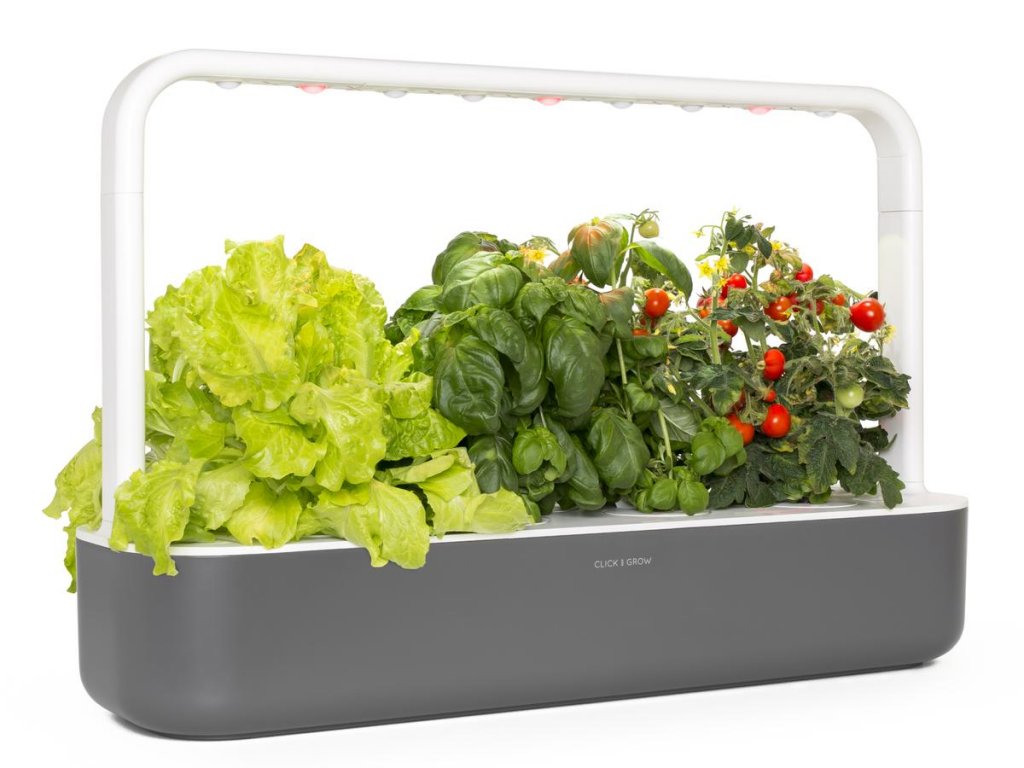Smart Gardening is here to stay, new products are coming to the market every day, today we are going to review on of the most sold an popular automated indoor garden of the market: the Emsa Smart Garden.
The Emsa Smart Garden, also sold as Click&Grow is an automated hydroponic gardening system that can grow many herbs by itself. It’s an indoor garden that has a lighting system, a watering system and as self gardener the only thing you do is to plug in, put some seeds and watch them grow!
Emsa Click & Grow Smart Garden:
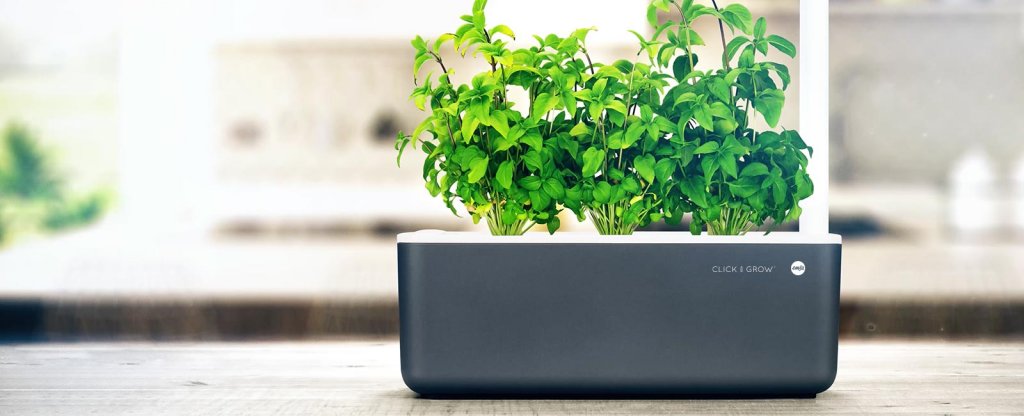
The company:
The company started in Estonia after an initial period of developing received venture capital funding from IKEA related companies and Groupe SEB, a French company involved in household products brands, you’ll known it for its trademarks such as Krups, Rowenta or Moulinex.
We see indoor gardening becoming a promising trend for home and office. We are convinced by the leading edge of Click and Grow products and technology in this domain
The vice president of SEB Alliance
We are also convinced that Smart Gardening systems will become common in the near future, so lets see what this company has to offer:
Emsa Click&Grow versions:
Emsa Click & Grow is very similar to the Plantui capabilities, reviewed in a previous post: it includes a lighting system and a watering system that can fit many plants needs.
There are two versions of the Click&Grow Smart Garden:
There are two versions of this indoor garden: the Emsa 3 and the Emsa 9, the difference between the two of them is the available slots for growing, the name says it all, one has 3 slots, the other has 9. This means that we can grow 3 or 9 plants at a time, beside of this, both models have the same capabilities, functionality and a very similar design:

Emsa Click & Grow 3 
Emsa Click & Grow 9
The lighting system:
A LED grow lighting system:
The light grow system is made of out LEDs, with a combination of white leds lighting and red light it offers a good spectrum for plants growth, this works well for growing plants, but it does not fit many plants blooming needs:
Most plants are sensitive to the photoperiod, the photoperiod is the physiological reactions to the amount of lighting and dark hours, on the Click&Grow this can not be really controlled, the device always has the same day/night period, 16h hours of light, 8h of night, and it can not be modified, the only thing you can to modify it is to unplug the device and plug it again to start a new cycle.
But many plants needs certain amount of daily hours and night hours to bloom, from the duration of the day plants can know if it’s spring, summer or autumn, without this variations on day length, many plants aren’t able to bloom, and thus, they will never produce fruits.
So, this is a drawback to some plants, as you can not control the duration of the daily hours some plants will just never be able to bloom, I’m talking about tomatoes for example, or many flowers, but as far as you do not expect to grow them on this device you should be fine.
A standard fixed photoperiod of 16h/8h (daily hours/night)
This fixed photoperiod works certainly well for lettuces, basil plants and other vegetables that are eaten before blooming, and generally it works well for the growing stages of most plants, but that is it, do not expect to modify it because you won’t be able to.
This same drawbacks are present with the Plantui smart garden, but on the Plantui there is a little advantage, you can turn it off any time by just touching it, without having to do a hard reset of it by unplugging the device.
The watering system:
A pasive watering system:
The Emsa Click&Grow smart garden comes with a passive watering system. A passive watering system is a method to water plants without the assistance of pumps or similar electrical devices.
Passive watering system take advantage of physical properties of the environment, most of this system use a very special physical property of the water called capillary action.
What is capillary action?
Capillary action is the ability of a liquid to flow in narrow spaces without the assistance of, or even in opposition to, external forces like gravity, as you can see on the following images if you put a straw inside a bowl full of water some of this water will climb thru the straw far beyond the water level.
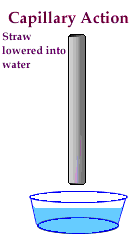
In fact, the more narrow the straw is higher will the water reach.
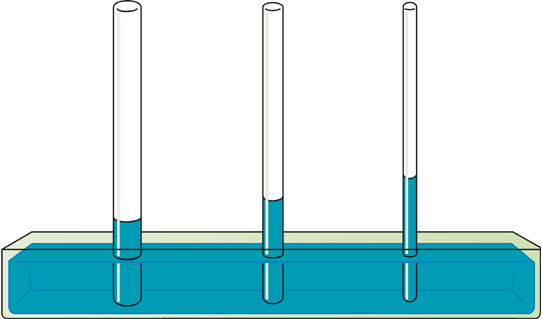
The more narrow it is, there more high it goes
Does this passive watering system work well?
Well, it works as a watering system, all old self-watering pots and planters that are been available on the market for many years use this principle, sometimes aided with cloths or other capillary fibers that act as very thin straws and help the water to reach higher levels.
This is exactly the design used on the Emsa Smart Garden, as you can see on the following images of the Click&Grow planters. Attached to the bottom part of the planter there is a wick made out of fibers, each fiber acts itself as a straw, helping the water to reach the planter cup.

The Emsa planters 
The capillary fibers
As with the old self-watering planters this system does not offer any control of the amount of water that the plant is exposed to. In certain situations this may lead to common plant overwatering problems, like mold and fungus infestation due to overwatering.
The body of the device:
All the indoor gardens are made of plastic, the standard color version is white but there are beige and black options for the same price. Also, there is a higher priced gold metallic finished version for the two models: Smart Garden 3 and Samrt Garden 9.

Gold metallic finish 
Beige opaque finish 
Black opaque finish
Conclusions:
Smart gardening and indoor automated domestic devices are still in a very early stage of development, as the market of domestic indoor garden matures more options will become available, and more affordable:
Price:
The Smart Garden 3 costs around 100$ or €, the bigger model, Smart Garden 9, goes up to 200$.
The 3 slots version has a reduced price, the bigger model may seem a bit pricey for almost a common self-watering pot made out of plastic with some colored lights attached but behind this products there is a high effort in developing an automated domestic indoor garden, the bet is high and the result is frankly good, if not, take a look on this time-lapse video:
Although this device is capable enough to grow some plants by its own, and this is by itself a success, it has some limited capabilities on user interaction and on the control system.
Frequently Asqued Questions:
How does the Emsa Smart Garden avoid mold and algae?
To avoid algae and mold grow inside the water tank and the planter soil the Emsa Smart Garden has taken to common solutions:
The use of inorganic soil:
The use of an inorganic soil for the planters is a common solution on hydroponic watering systems because inorganic soils are a poor substrate specially for bacteria because there is no organic matter to decompose.
Isolation of the water tank:
For the bacteria and algae growth some amount of light is needed, if there is no light they can’t grow or they grow at a really slow rate. This is the reason why most water tanks have opaque surfaces.

